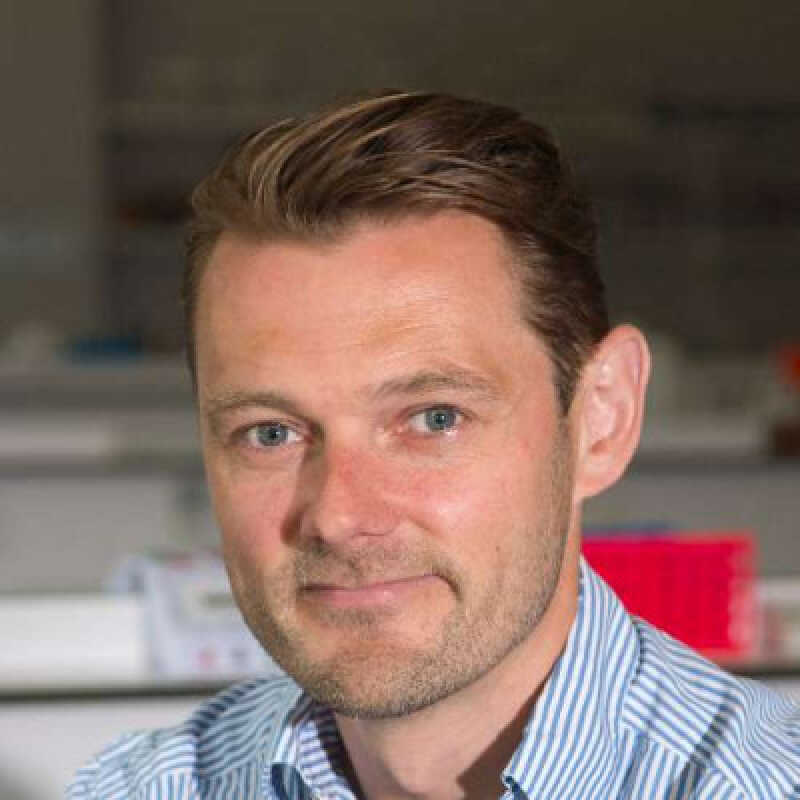- University of Kent
- Biosciences at Kent
- People
- Dr Mark Shepherd
Dr Mark Shepherd


Dr Mark Shepherd joined the School of Biosciences in 2011. He studied Biochemistry at the University of Sheffield and stayed in the Department of Molecular Biology & Biotechnology to undertake a PhD with Professor Neil Hunter FRS (1999-2003), where he developed his interest in the enzymology and spectroscopy of chlorophyll and haem biosynthesis.
After completing his PhD studies, he conducted postdoctoral research with Professor Harry Dailey at the University of Georgia, where his research focused on the terminal enzymes of haem biosynthesis. This was followed by a move back to the University of Sheffield in 2005 to take up a postdoctoral position with Professor Robert Poole, where he developed interests in E. coli. respiration, globin proteins, and the response of bacteria to nitric oxide. A subsequent position at the University of Queensland with Prof. Mark Schembri focussed on nitric oxide stress in Uropathogenic E. coli.
In 2011 he moved to the University of Kent, where he is now a Reader in Microbial Biochemistry.
Topics of interest include antibiotic resistance, stress tolerance, respiratory metabolism, haem biosynthesis, disulphide folding, and biofuel production. A collaborative approach is adopted using a wide variety of techniques including chromosomal engineering, transcriptomics, proteomics, metabolomics, microscopy, protein biochemistry, enzyme kinetics, and structural biology.
Current projects
Antimicrobial resistance in E. coli clinical isolates
E. coli causes serious conditions including sepsis, bladder infections, kidney failure, and dysentery. The emergence of drug resistance in pathogenic strains is an increasing problem on a global scale. We liaise with collaborators in the NHS to collect E. coli clinical isolates for antibiotic screening and for other phenotypic characterisation. Collaborative genome sequencing approaches are undertaken to provide insights into the prevalence, evolution, and spread of antibiotic resistance in this deadly human pathogen.Adaptations to nitric oxide (NO) in uropathogenic E. coli
Uropathogenic E. coli (UPEC) strains are a major cause of urinary tract infections (UTIs), and emergence of antibiotic resistance in UPEC is becoming an increasingly serious problem. Of special interest is the response of E. coli to nitric oxide (NO), a remarkable regulatory molecule and a powerful tool used by mammalian cells to combat microbial infection. Bacteria encounter nitric oxide from host NO synthases in the gut, and NO is also encountered by UPEC in the human urinary tract during UTI. The toxic effects of NO to bacterial cells are diverse: NO can readily diffuse across cell membranes to react with various targets, including haems, iron-sulphur clusters, and protein thiols. Invading E. coli respond in a variety of ways that confer tolerance to NO exposure and enable persistence in the host. The overarching goal is to advance the understanding of NO tolerance mechanisms in drug-resistant UPEC strains.Bacterial disulphide bond formation
Proteins must be assembled and correctly folded to function, and a key step in the protein-folding pathway is the introduction of disulphide bonds between cysteine residues. Many bacterial virulence factors, such as fimbriae, flagella, and toxins either contain disulphide bonds or require them in some component of their assembly pathway. In addition, the yield and quality of disulphide-containing protein therapeutics produced in E. coli, such as antibodies and hormones, is influenced by the expression of recombinant folding chaperones. Our current focus is to elucidate the biochemical properties and physiological roles of disulphide chaperones in virulence and survival and to determine their suitability to improve disulphide folding of proteins of biotechnological importance.Biofuel production in Clostridium
Solventogenic strains of Clostridium are used to produce acetone, butanol and ethanol via the process of ABE fermentation. Besides their use as biofuels, derivatives of ABE fermentation are used to manufacture latex paints, lacquers, enamels, automotive coatings and industrial coatings, and are used are used as solvents in vinyl, cellulosic, acrylics, urethanes and epoxy coatings. We combine strain engineering approaches with metabolomics and genomics to gain a fundamental understanding of Clostridium metabolism, and apply this knowledge to optimise solvent yields.Bacterial haem synthesis
Undergraduate
Postgraduate
Loading publications...
Showing of total publications in the Kent Academic Repository. View all publications